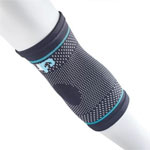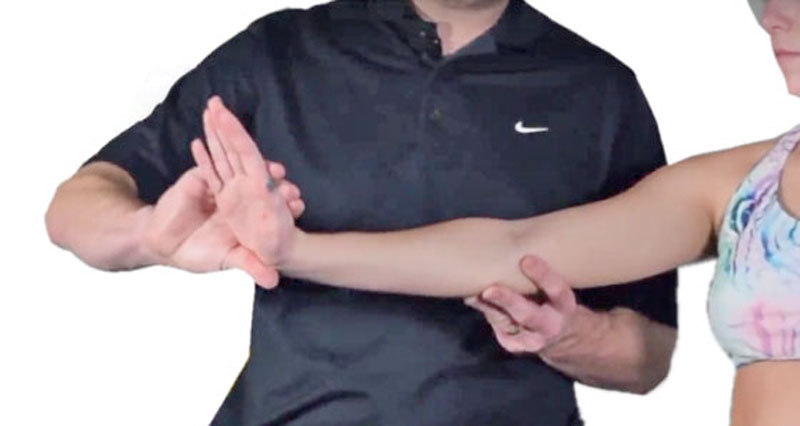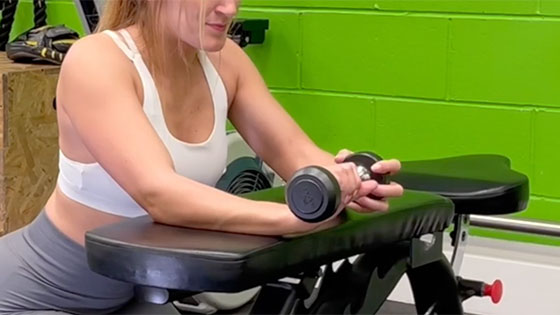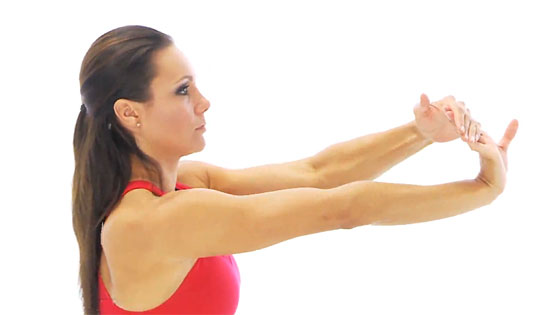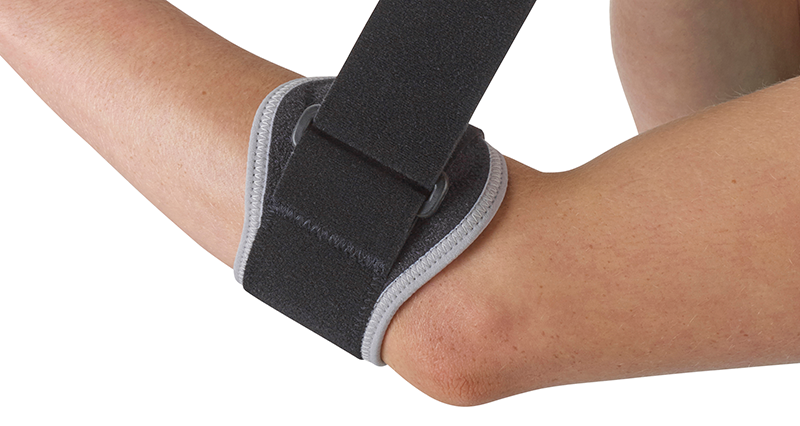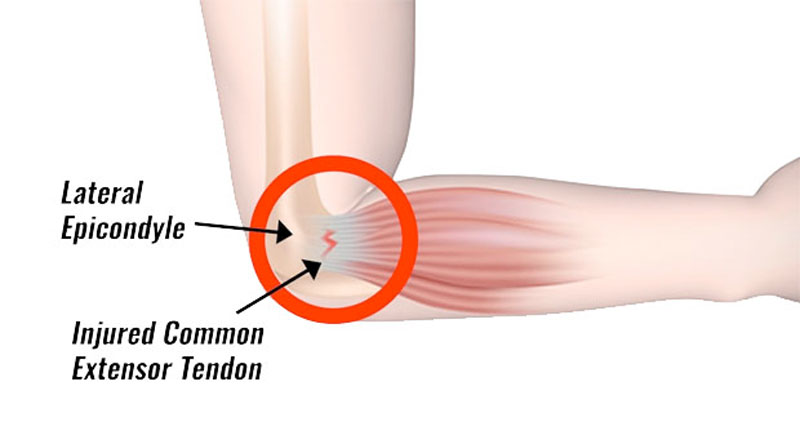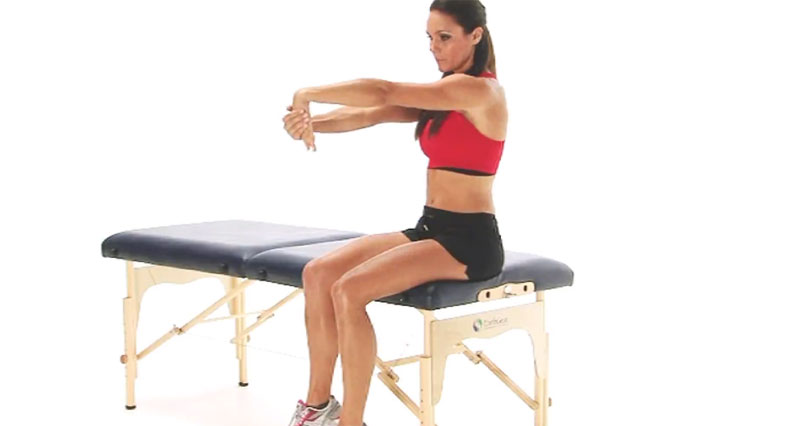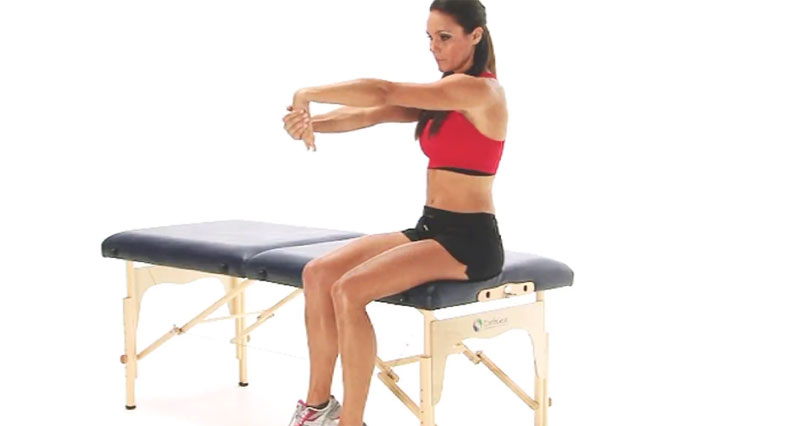Sports massage is useful for treating tennis elbow, particularly more chronic conditions. Two techniques, in particular, that work well are cross friction of the tendon and myofascial release of the forearm muscles. These simple techniques are suitable for self-massage for Tennis elbow or lateral epicondylitis.
Cross friction massage
Place the second finger of your opposite hand on the outside of your elbow and rub across the tendon (painful area) for 5 minutes. Do not press too hard; there may be mild pain while applying massage friction to the area. Repeat once a day. Stop if your pain worsens after the treatment.
Every tennis elbow injury will react differently to the treatments available so using a number of them concurrently is often the most effective way of treating the condition.
In addition to treating the current injury, it is also important to identify and correct any possible causes that may be work-related or sport-related, and your therapist will be able to advise how to achieve this.
How is massage helpful for treating Tennis elbow?
Sports massage can be quite helpful for treating tennis elbow (lateral epicondylitis) by targeting specific issues associated with the condition. Here’s how sports massage can benefit someone with tennis elbow:
1. Improving Blood Circulation
Sports massage helps increase blood flow to the affected area, delivering more oxygen and nutrients to the injured tissues. This accelerates and enhances the healing process and as a result, reduces recovery time.
2. Reducing Muscle Tension
Relief from Tightness: By targeting the muscles and tendons around the elbow and forearm, sports massage can help release muscle tightness and tension. This can alleviate the strain on the tendons affected by tennis elbow.
3. Decreasing Pain and Inflammation
Pain Relief: Massage techniques can stimulate the release of endorphins, the body’s natural painkillers, providing relief from the discomfort associated with tennis elbow.
Inflammation Reduction: By improving lymphatic drainage, sports massage can help reduce inflammation and swelling in the affected area.
4. Breaking Down Scar Tissue
Scar Tissue Management: Over time, scar tissue can build up around the injured tendons, leading to stiffness and pain. Sports massage can help break down this scar tissue, improving flexibility and reducing discomfort.
5. Enhancing Range of Motion
Increased Flexibility: Regular massage can help improve the range of motion in the elbow and forearm, which can be restricted due to pain and stiffness from tennis elbow. Enhanced flexibility can aid in a quicker return to normal activities and sports.
6. Promoting Relaxation
Overall Well-Being: Beyond the physical benefits, sports massage can also promote relaxation and reduce stress, which can be beneficial for overall recovery and well-being.
Techniques Used in Sports Massage for Tennis Elbow
Effleurage: Light, gliding strokes to warm up the area and increase blood flow.
Petrissage: Kneading and squeezing the muscles to release tension and improve circulation.
Friction: Deep, circular movements to break down scar tissue and adhesions in the tendons.
Myofascial Release: Gentle stretching and manipulation of the connective tissue to reduce tightness and improve flexibility.
Trigger Point Therapy: Applying pressure to specific points in the muscles to relieve pain and tension.
Additional Considerations
Consistency: Regular sessions may be necessary to achieve significant improvements.
Qualified Therapist: It’s important to seek treatment from a qualified sports massage therapist who has experience dealing with tennis elbow.
Combined Approach: Sports massage can be part of a comprehensive treatment plan that includes rest, physical therapy, stretching exercises, and possibly other medical treatments as recommended by a healthcare professional.
Incorporating sports massage into the treatment plan for tennis elbow can help alleviate symptoms, improve function, and speed up recovery.
